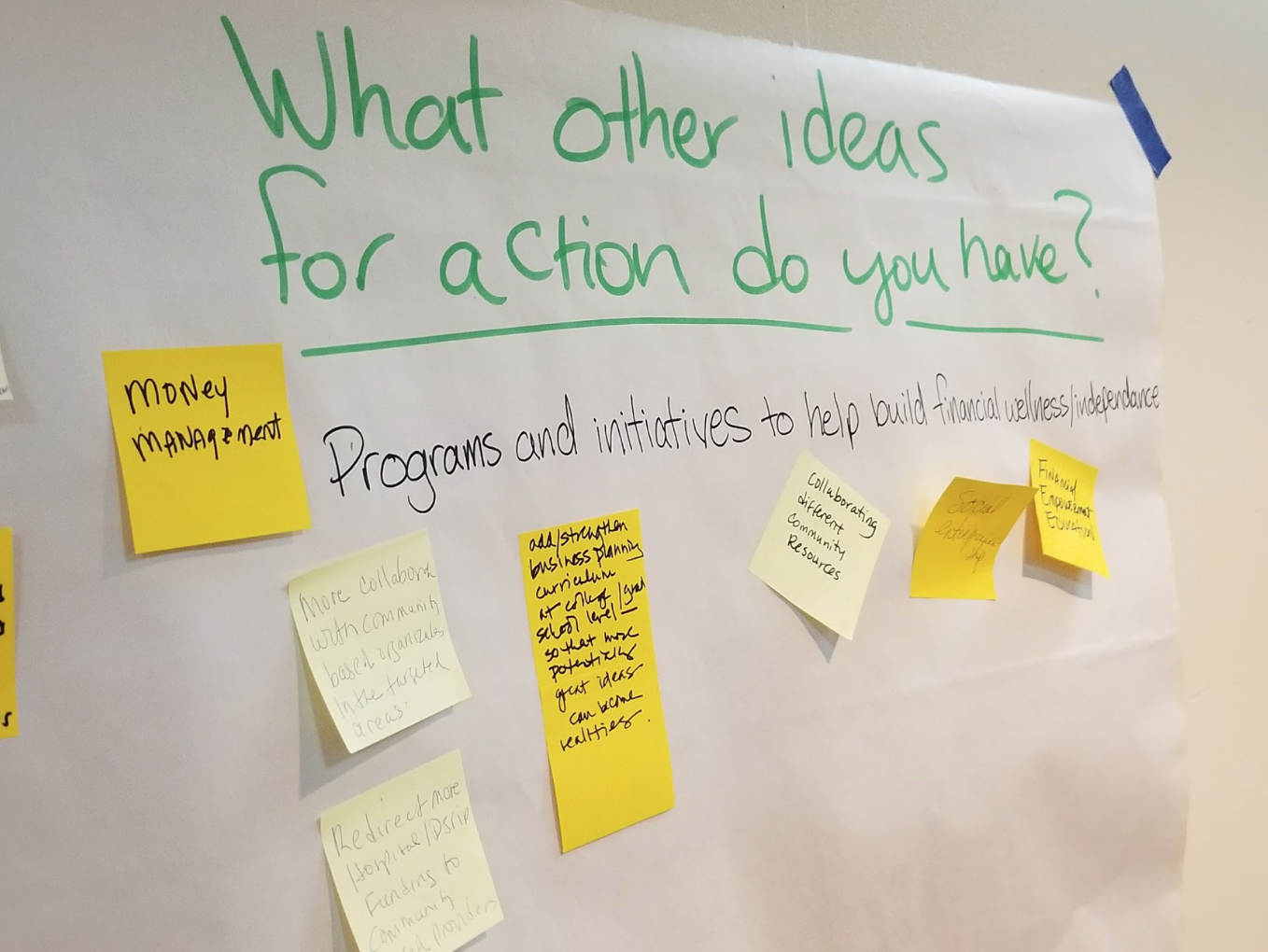The emergence and existence of white nationalism in our country signals a backwards turn to the right more abruptly than most of us want to admit to ourselves. But here we are. Aquí estamos. From my lived and professional experience, I know there is hope. Millennials, people of color, and unmarried women - the American Rising Electorate (ARE) - are the majority of the likely Democratic base at 59.2 percent. This movement at the ballot box can usher a new era of civic participation and governance to rewrite the American social contract. Without this movement, we will not effectively address the current political climate or the tilted electoral map.
March 2018, Rivera Consulting Inc., at Groundswell Fund, talk and handout by Wilnelia Rivera lists federal (democratic primaries + red to blue) and governor’s races with women and people of color running in midterm elections.
Deep democracy is the inherent belief that those at the margins should be at center and that the inclusion of all voices allows for a more complete view of the system. This inclusion takes the radical redistribution of power and privilege. It takes resisting cultural hegemony, taking over the ballot box, and winning governance power. This takes developing the political application of deep democracy.
Too often work in this space is often separate from discussions and plans to build political power. At Rivera Consulting, Inc., deep democracy opportunities exist in places across the country where you have the following synergy of factors: 501c3 and 501c4 organizations leading integrated voter engagement efforts, progressive ballot questions, coordinated donor and field coordination, exciting women and people of color running at all levels.
To me, it is clear that the breakdown in our democracy, its undemocratically distorted electoral maps and the emergence of Trump, require that we re-prioritize the political giving and spending that has contributed to this current landscape. Donor and philanthropists invest early and directly in organizations, operatives and strategists that work directly with the ARE we can increase its turnout. This also requires supporting and electing bold progressive candidates while transforming public debate, the electoral landscape, policy and the economy.
In order for deep democracy to be real, it also requires the professional development of the bench of director, strategists, experts, operatives, and justice warriors that will do this work. This is why, we must deepen relationship and partnerships with donors and philanthropists to explore, how we can co-build this infrastructure.
For Maria’s List, we conducted national candidate outreach and campaign analysis, identifying ten states where new investments can be made in the 2018 midterm elections: Florida, Georgia, Michigan, Massachusetts, Maine, Maryland, Nevada, New Mexico, New York and Texas. For Groundswell Education and Action Fund, we aligned their current 501c3 and 501c grantmaking funds for integrated voter engagement with deep democracy opportunities across the country.
The next four years will be pivotal to us as a country. The mainstream media has us believing that if Democrats do not obtain a supermajority in Congress that we may not see our way out of this. The supermajority should not come at the further cost of our values or at the loss for the vulnerable and the ARE.
The rules of engagement in D.C. area different. We need a crop of fresh Democrats to be elected to work alongside seasoned members of Congress. That is why we are the senior campaign advisor to elect Ayanna Pressley for Congress (MA-07). Because as her campaign tagline states, change cannot wait.
Ultimately, if we are going to take the keys aways from the people that currently are driving us into deeper and darker ditches, we need to resist and rebirth a new political paradigm and landscape. To prepare to take over the wheel also requires and demands choosing equity by sharing power. That is the potential and possibility of deep democracy.



